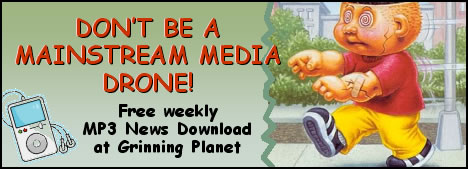|
Whether we're in the middle of the annual argument about clothes—"Mom, I will NOT wear THAT to school this fall"—or
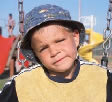 we're proudly reviewing our child's report card, making sure our kids get a good education is important to all of us.
we're proudly reviewing our child's report card, making sure our kids get a good education is important to all of us.
We usually take it for granted that their learning environment will be clean and safe, but some school districts could be doing a better job. Here's a list of things to check into to make sure your school isn't poisoning bodies at the same time it's nurturing minds.
Studies done by the US Environmental Protection Agency (EPA) indicate that indoor levels of pollutants may be 2-5 times higher—and occasionally more than 100 times higher—than outdoor levels of pollutants.
Over the past several decades, exposure to indoor air pollutants has increased due to a variety of factors, including:
- buildings being built "tighter" and ventilation systems using a lower percentage of fresh air (both of which are done to keep energy costs down);
- the use of synthetic building materials and furnishings, which off-gas pollutants;
- people's use of chemically-formulated personal care products and cleaning supplies, which also send molecules of pollution into our breathing air;
- applications of chemical pesticides inside buildings.
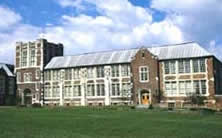 Risk studies performed by EPA have consistently ranked indoor air pollution among the top five environmental health risks to the public. Students spend most of their at-school time inside the school building, so indoor air quality is an area that school administrators should be checking up on.
Risk studies performed by EPA have consistently ranked indoor air pollution among the top five environmental health risks to the public. Students spend most of their at-school time inside the school building, so indoor air quality is an area that school administrators should be checking up on.
To get more background on indoor air quality in schools, see the EPA web page on the subject. If you're interested in talking to your school about it, the EPA web site has a number of checklists for school teachers, administrators, and maintenance personnel (see left-side blue panel). It would be good to familiarize yourself with some of these, or to at least print them out and take them with you.
As noted in Section 1, chemical pesticides can be an air contaminant, but they can also cause trouble if kids get them on their skin. While we certainly don't want kids being contaminated with pesticides,
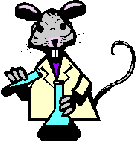 we also don't want to have cockroaches, ants, and rats learning the three R's right alongside them, so what do we do?
we also don't want to have cockroaches, ants, and rats learning the three R's right alongside them, so what do we do?
The solution is "integrated pest management," which is a systematic approach to pest control designed to minimize (but not necessarily eliminate) the use of chemical pesticides. The concept favors physical barriers, better sanitation, and least-toxic pesticides first; and only if those steps fail are more potent chemicals used. The net result is fewer toxic molecules in your child's learning environment.
Your school may assure you that the pesticides they use are safe, but that is not enough. Many pesticides approved for use by the EPA are NOT safe (or have not been sufficiently evaluated to warrant a safety claim). Young, developing bodies are particularly at risk from exposure to pesticides. You can get more information on how to tackle this problem by visiting Beyond Pesticides' Children and Schools page.
While we're on the subject of pesticides, is there any chance that your school district offers organic food? Probably not.
Is that important? You decide: A University of Washington study found that children fed mostly organic produce and juice had only one-sixth the level of organophosphate pesticide byproducts in their urine compared to children who ate conventionally grown foods.
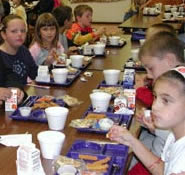 The difference was statistically significant, with the children who ate conventional diets having levels above the amount considered to be "negligible risk" by the EPA but the children who ate mostly organic diets having levels below the negligible-risk threshold.
The difference was statistically significant, with the children who ate conventional diets having levels above the amount considered to be "negligible risk" by the EPA but the children who ate mostly organic diets having levels below the negligible-risk threshold.
If you're interested in trying to convince your school district's administrators to consider adding some proportion of organic food to their fare, check out our article Healthy School Lunch – The Organic Version, as well as the Organic Trade Association's organic food recipes.
You can also, of course, just make sure you're packing nutritious organic foods in your kids' lunchboxes. Helpful links:
Does your child's school bus have seat belts? We hope so, but it wasn't that long ago that the answer was often "no." Fortunately, that's been changing.
Something that has been slower to change is the use of dirty diesel-powered school buses. That cloud of black smoke coming out of a bus's tailpipe isn't just an eyesore,
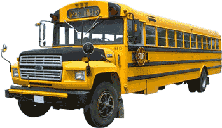 it's an airborne witch's brew of toxic chemicals. According to the Union of Concerned Scientists (UCS), diesel pollution has been linked to increased asthma rates, missed school days, hospitalizations, chronic bronchitis, heart disease, cancer, and even premature death.
it's an airborne witch's brew of toxic chemicals. According to the Union of Concerned Scientists (UCS), diesel pollution has been linked to increased asthma rates, missed school days, hospitalizations, chronic bronchitis, heart disease, cancer, and even premature death.
Children can be exposed to buses' diesel exhaust while in transit or while buses are sitting in front of the school idling. The long-term solution to the problem is for school districts to purchase less-polluting types of buses, but short-term solutions include making sure buses minimize their idling time in front of schools.
New, cleaner diesel fuel will help lessen emissions, but cleaner fuel won't make older buses "clean"—they'll still need to be retrofitted (or retired).
|
If you want more information in general about keeping schools safe and clean, check out healthyschools.org. And in the meantime, if your kids did anything out-of-line over the summer, tell them that this year you're going to insist they wear only school clothes from the "No Way Mom" label.
Know a parent who might like this Back to School Safety article? Please forward it to them.
Books:
- See books related to
Health & Safety in Schools
More articles and resources on....
|
|
Get Grinning Planet free via email
|

